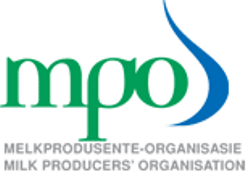
South Africa prepares its third report to the United Nations Framework Convention on Climate Change
South Africa, as a long-time signatory to the United Nations Framework Convention on Climate Change (UNFCCC), is obligated to make regular reports on the status and projections of climate change in the country as well as the steps we are taking to mitigate and adapt to it. The Department of Environmental Affairs, in cooperation with the Council for Scientific Research, has prepared a draft report for submission, however interested parties have been afforded 30 days (until the 30th of July) to comment on the draft report before it is submitted. Agbiz has reviewed the draft report and will prepare inputs to ensure that the risks and effects of climate change is accurately captured from an agribusiness point of view as the focus in the report is largely on primary agriculture. Our comments will be submitted through Business Unity South Africa.
According to the report, climate change will cause temperatures to rise at twice the global rate in South Africa until the end of the century. Looking at the current trends, average temperatures in South Africa rose by 2 degrees Celsius in the period between 1921 and 2015 and projections are that Southern Africa will continue to warm at the same disproportional rate compared to the rest of the world, reaching an increase of 4 degrees by 2080 – 2099 compared to the global expectation of 2 degrees Celsius. However, if high mitigation strategies are adopted it is projected that the warming can be limited to between 2,5 and 4 degrees Celsius. In addition to overall temperature increase, variability is also set to increase with the total number of very hot days (in excess of 35 degrees Celsius) also set to increase whilst the average number of cold days per year are set to decrease. The nett effect will be felt sharply in agriculture as increased temperatures lead to greater transpiration, and hence a greater reliance on irrigation. Whilst increased temperatures may favour certain subtropical fruits, benefits could be off-set by an increased frequency of damaging storms whilst the decrease in cold winter days could affect pome fruits.
As far as rainfall is concerned, the picture is a bit less clear. The report suggests that annual rainfall has decreased in the Western Cape, Northern Cape and northern Limpopo Province over the period between 1921 and 2015 whilst rainfall in the interior has increased. Although there is considerable variation in the models used, there is a possibility that this trend may continue but an increase in variance coupled with a rise in temperature poses a threat to several agricultural production areas.
According to the report, the climate change projections indicate adverse impacts on cereal crop production, high value export agricultural production and intensive animal husbandry whilst possibly presenting more favourable conditions for tropical crops such as sugar cane, although this is tempered by a possible increase in pests. In this regard, the report deals quite pointedly with the effects of climate change on primary agriculture, but what it does not adequately highlight is the effect that this may have on agribusinesses. For example, the report fails to fully comprehend the effect that increased variability inevitably poses to insurance companies and consequently the availability of crop insurance. Likewise, financial institutions will have to weigh up the risks of climate change when granting credit to an industry that may increasingly show symptoms of boom and bust between seasons. At the same time, it may stimulate greater support for seed companies to develop drought-resistant cultivars.
As far as mitigation is concerned, the emphasis is understandably placed primarily on the energy, manufacturing and waste sectors as they are by far the biggest greenhouse gas emitters, and their combined emissions increased by 2% over the period 2000 to 2012, although it is likely that this would subsequently have come down due to decreased production during the energy crisis. Agriculture does contribute to greenhouse gas emissions but the sector managed to reduce its emissions by 0.7% over the same period.
The UNFCCC places an obligation on member states to introduce both mitigation and adaptation initiatives to combat climate change. As far as mitigation is concerned, the emphasis is placed mostly on the proposed carbon tax and carbon budgets, both of which are still at the conceptual phase and serious questions have been raised about their affordability in the current economic climate.
As far as adaptation is concerned, South Africa can report on a number of studies undertaken and documents compiled, including; the National Climate Change Response White Paper, the Long-Term Adaptation Scenarios (LTAS) Research and the draft amendments to the Disaster Management Act.
Regarding the latter, an Amendment Bill was published in December 2015 that introduces disaster management reduction plans to be compiled at national, provincial and local level.
The idea behind these amendments are to proactively identify those people that most at risk to falling victim to a national disaster. To supplement this, the ‘National Vulnerability Assessment’ methodology has been drafted that uses the following formula to determine who is most at risk:
Vulnerability = (Hazard Exposure X Sensitivity) – Adaptive Capacity
The LTAS likewise identifies five priorities for the agricultural sector to adapt to the effects of climate change, namely;
- Mainstreaming climate smart agriculture and forestry;
- Mainstreaming climate smart agriculture and forestry;
- Improved water use efficiency and management;
- Improved soil conservation and catchment management;
- Improved monitoring, knowledge and decision support systems; and
- Further development of new crop varieties.
Whilst these seem to be laudable aspirations, they are all aimed at primary agriculture. If the 2015/2016 drought was anything to go by, it highlighted the immense role that agribusinesses played in mitigating the effects of the climate-related disaster and one would consequently hope to see a greater emphasis in the final report on mitigation measures aimed at assisting agribusiness to deliver their services during times of increased climate variability and risk.
Theo Boshoff (theo@agbiz.co.za)
Disclaimer: Everything has been done to ensure the accuracy of this information, however, Agbiz takes no responsibility for any losses or damage incurred due to the usage of this information
Published on Wednesday, 12th July 2017 - 16:12
Recent Posts
disclaimer









